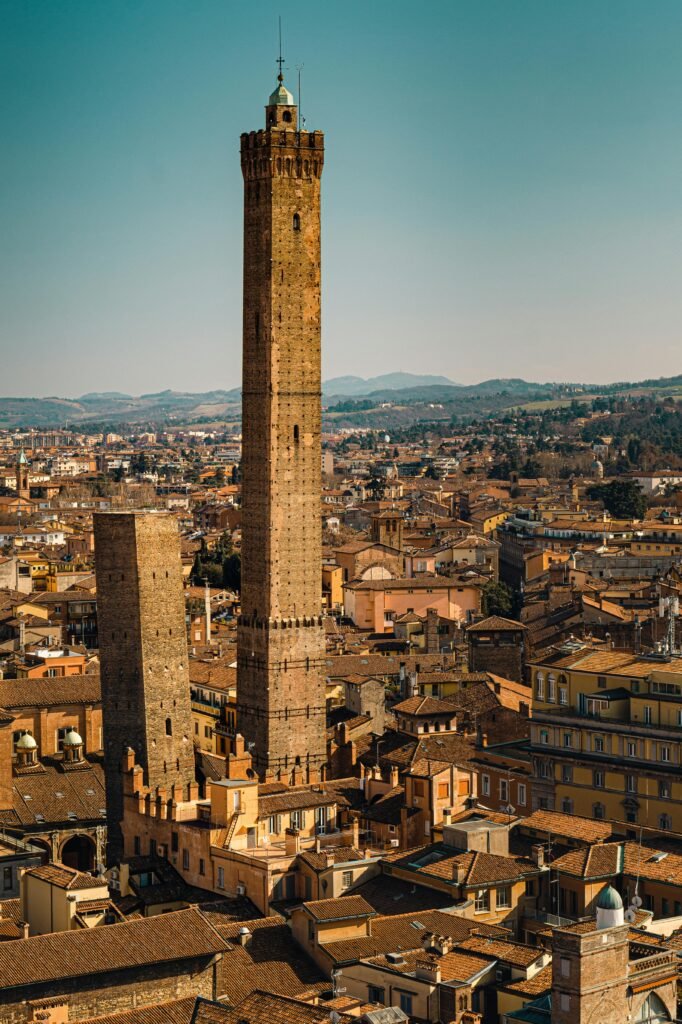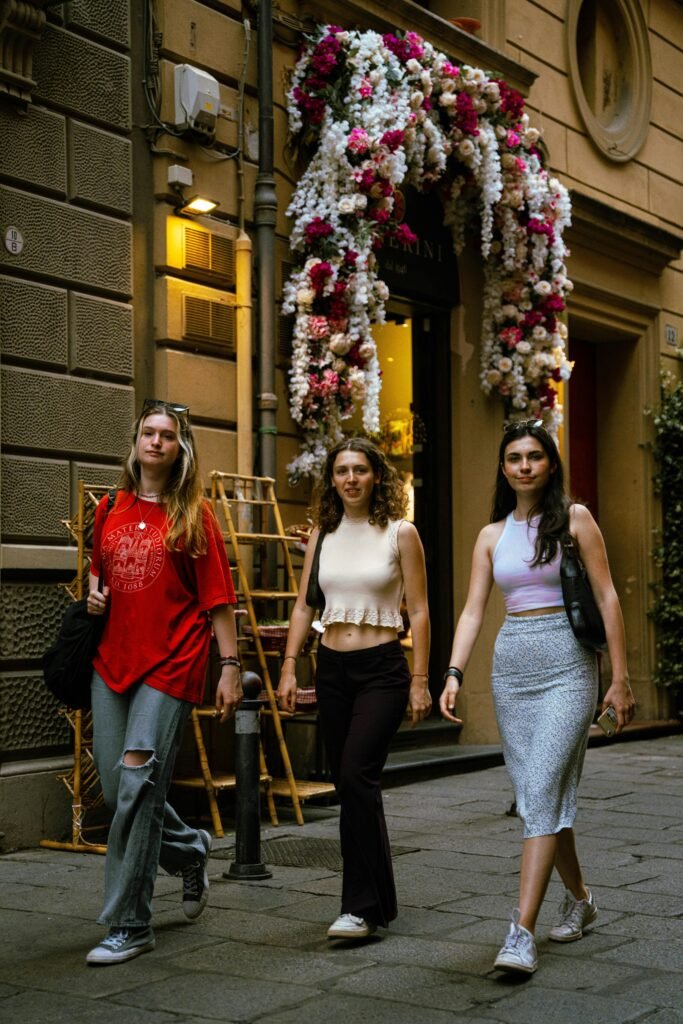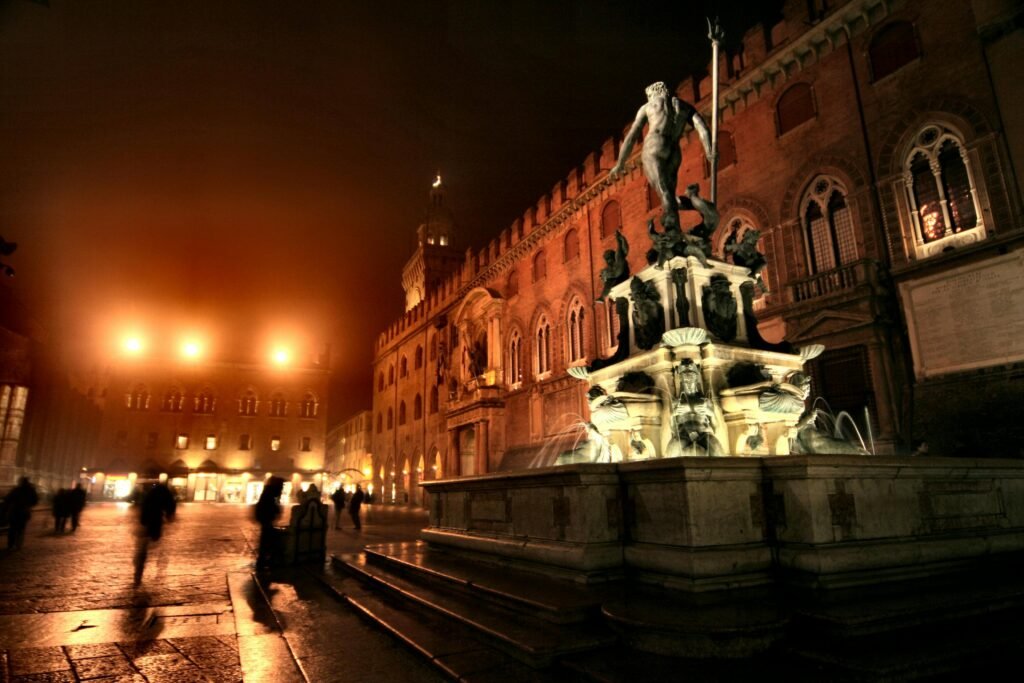Yes, Bologna is completely worth visiting for its incredible food scene, which many consider the best in Italy.
As the birthplace of tagliatelle al ragù (what the world calls Bolognese sauce), mortadella, tortellini in brodo, and countless other specialties, Bologna offers an unmatched culinary experience.
Whether you’re sampling fresh pasta at a family-run trattoria or exploring the lively food markets, every meal feels like a celebration of tradition and flavor.
In this guide, I’ll share exactly why Bologna deserves a spot on your Italian itinerary and help you decide if it’s worth visiting for your travel style.
Spoiler alert: unless you’re only interested in beaches or mega-famous landmarks, Bologna will probably surprise you in the best way possible.
Who Should Visit Bologna (And Who Might Want to Skip It)
Definitely, but Bologna isn’t for everyone, and I think it’s important to be honest about who will love it and who might be disappointed.
You should definitely visit Bologna if you’re a food enthusiast.
If you’re the type of person who researches local markets and traditional recipes before traveling, Bologna will be your paradise.
Culture and history lovers will also fall in love with Bologna.
Bologna is perfect for travelers who want to experience “real” Italy without the overwhelming crowds.
If you’ve been to Rome or Florence and felt stressed by the number of tourists, Bologna offers that authentic Italian experience in a much more relaxed setting.
It’s also great for people who want to use it as a base for exploring.
The train connections to other Italian cities are excellent, and the Emilia-Romagna region has so many incredible destinations within an hour or two.
Why you should not visit Bologna
However, Bologna might not be the best choice for everyone.
If you’re looking for world-famous landmarks and Instagram-worthy shots, you might be disappointed.
There’s no Colosseum or Grand Canal.
Bologna’s beauty is more subtle and requires a bit more appreciation for everyday Italian life.
Beach lovers should probably skip Bologna – it’s inland, and while there are beaches within driving distance, that’s not really what the city is about.
Similarly, if you’re looking for intense nightlife or party scenes, Bologna is more about cozy wine bars and late dinners than clubs and wild nights out.
People who prefer highly organized, touristy experiences might find Bologna challenging.
There aren’t as many English-language tours, the museums are smaller, and you need to be more independent in exploring the city.
Honestly though, Bologna converted me from someone who thought I needed famous landmarks to have a great Italian experience. Sometimes the best travel memories come from unexpected places.
Top Attractions and Things to Do in Bologna

The Two Towers (Asinelli and Garisenda) are Bologna’s most famous landmark, and climbing the Asinelli Tower was definitely a highlight of my trip.
Fair warning though – it’s 498 steps to the top, and the wooden staircase gets pretty narrow and steep.
The view from the top is absolutely worth it though.
You get this incredible panoramic view of all those red rooftops stretching out in every direction, interrupted by church domes and other medieval towers.
On a clear day, you can supposedly see the Alps, though I wasn’t that lucky with the weather.
The Garisenda Tower leans more than the Tower of Pisa, but you can’t climb it because it’s not considered safe.
Still, seeing these two ancient towers side by side is pretty incredible. They were built by noble families in the 12th century as symbols of wealth and power.
The porticoes themselves are a UNESCO World Heritage site, and honestly, just wandering around under them is an attraction in itself.
The longest portico leads up to the Sanctuary of Madonna di San Luca – it’s 3.8 kilometers long and has 666 arches.
Piazza Maggiore is the heart of the city, and it’s where you’ll find the Basilica di San Petronio.
This church was supposed to be bigger than St. Peter’s in Rome, but the Pope put a stop to that plan.
Still, it’s massive and the facade is fascinating – half finished in marble, half left as bare brick because they ran out of money.
Bologna vs Other Italian Cities: How Does It Compare?
Having visited most major Italian cities, I can honestly say Bologna offers something completely different from the usual tourist trail.
Bologna vs Florence
Compared to Florence, Bologna feels much more relaxed and authentic.
Don’t get me wrong – Florence is gorgeous and the art is incredible.
But walking through Florence often feels like navigating a theme park, especially around the Duomo and Ponte Vecchio.
In Bologna, you’ll share the streets with locals going about their daily business, university students, and families who’ve lived there for generations.
The food situation is dramatically different too.
In Florence, you’re often paying tourist prices for mediocre food near the main attractions.
In Bologna, even restaurants in the city center cater primarily to locals, so the quality stays high and prices reasonable.
Bologna VS Rome
Rome obviously has the major historical sites that Bologna can’t compete with – I mean, it’s Rome.
But Rome can be overwhelming and exhausting.
Bologna is walkable, manageable, and you can actually see everything without feeling rushed or stressed.
Plus, Bologna’s medieval architecture is incredibly well-preserved, giving you that historical atmosphere without the massive crowds.
Venice VS Bologna
Venice is magical, but it’s also expensive and completely overrun with tourists. Venice have a lot of interesting things to do.
Bologna gives you that uniquely Italian experience without feeling like you’re part of a cattle drive through narrow streets.
And you can actually eat well in Bologna without paying ridiculous prices or falling into tourist traps.
Practical Considerations: Cost, Transportation, and Logistics
Let me break down the real costs of visiting Bologna, because this is where the city really shines compared to other Italian destinations.
Accommodation cost in Bologna
Accommodation in Bologna is significantly cheaper than Rome, Florence, or Venice.
I stayed at a nice boutique hotel in the center for about €80 per night, which would easily cost €150+ in Florence during the same period.
Budget travelers can find decent hostels for €25-30 per night, and there are plenty of mid-range options in the €50-70 range.
Food cost in Bologna
Food costs are where Bologna really surprised me.
You can eat incredibly well for much less than other Italian cities.
A fantastic dinner at a local trattoria might cost €25-35 per person including wine, while the same quality meal in Florence would easily be €50+.
Lunch at a local osteria can be as little as €12-15 for pasta, wine, and coffee.
Transportation Option
Getting to Bologna is easier than you might think.
Bologna Marconi Airport has direct flights from many European cities, and it’s only 20 minutes to the city center by bus (€6) or about €15 by taxi.
The train connections are excellent too – Bologna is a major rail hub, so you can easily get there from Rome (2 hours), Florence (35 minutes), Venice (1.5 hours), or Milan (1 hour).
Once you’re in Bologna, you honestly don’t need any transportation besides your feet.
The entire historic center is walkable, and those porticoes mean you can get around even when it’s raining.
If you need to go further, there’s a decent bus system, but I never used it during my four-day stay.
Best Time to Visit Bologna and Seasonal Considerations

Timing your Bologna visit can make a huge difference in your experience, and there are definitely better and worse times to go.
Spring (April-May) and fall (September-October) are absolutely perfect.
Summer can be pretty hot and humid in Bologna.
July and August temperatures often reach the high 80s or low 90s Fahrenheit, and the humidity makes it feel even hotter.
Plus, many locals go on vacation in August, so some restaurants and shops might be closed.
Winter in Bologna is cold and often rainy, but honestly, it has its own charm.
The porticoes become even more important when the weather is bad, and there’s something cozy about ducking into warm trattorias when it’s gray and drizzly outside.
Why It’s Called “La Dotta, La Grassa, La Rossa
Bologna has three famous nicknames that locals are incredibly proud of, and honestly, they tell you everything you need to know about why this city is so special.
La Dotta
“La Dotta” means “The Learned” – and man, you feel it the second you walk around.
The University of Bologna was founded in 1088, making it literally the oldest university in the Western world.
I remember walking through the university quarter and seeing students everywhere, creating this amazing energy that’s been going on for almost a thousand years.
The Archiginnasio Library blew my mind – it’s covered in thousands of student coats of arms from centuries past.
La Grassa
“La Grassa” translates to “The Fat,” which might sound insulting but it’s actually the highest compliment!
This refers to Bologna’s incredible food culture. I gained like five pounds in four days, and I regret nothing.
This is where Bolognese sauce actually comes from (and locals will correct you if you call it “Bolognese” – it’s ragù alla Bolognese). The food scene here isn’t just good; it’s life-changing.
La Rossa
“La Rossa” means “The Red,” referring to those gorgeous red brick buildings that dominate the cityscape.
Walking through Bologna feels like being inside a medieval painting.
The red terracotta tiles and warm brick create this atmosphere that’s both cozy and grand at the same time.



